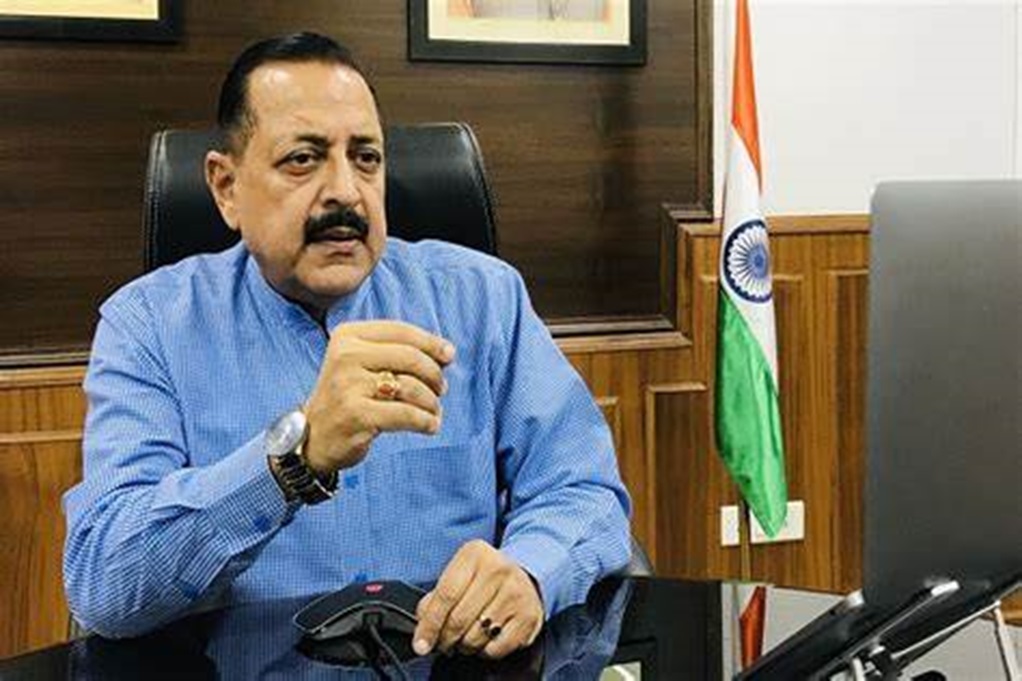Union Minister of State for Science and Technology, Dr. Jitendra Singh, emphasized the Green Hydrogen Mission as a key element of India’s strategy to decarbonize heavy industries, transportation, and power generation during a bilateral meeting on US-India Civil Nuclear Commerce held at Prithvi Bhavan in New Delhi. He said, “India to Enhance Global Climate Goals through Green Hydrogen Mission and SMR Collaborations”.
The Ministry of Science and Technology reported that Singh highlighted the initiative’s importance in driving innovation in clean technologies and contributing to global climate objectives. With robust policy frameworks and international collaborations, India is poised to lead the shift towards a sustainable energy future. Singh also revealed that an Indian astronaut from the Gaganyaan Mission will soon be joining the International Space Station (ISS). He said, “Indian Astronaut Set to join International Space Station Under Indo-US Space Cooperation”.
Dr. Singh announced that an astronaut from India’s Gaganyaan Mission will join the International Space Station, marking a major achievement in Indo-US space cooperation. He emphasized the significance of this collaboration in securing global supply chains, particularly in critical sectors such as semiconductors, pharmaceuticals, and clean energy technologies. Additionally, Dr Singh revealed that the Indian government is pursuing international collaborations, investing in research and development, and developing regulatory frameworks to support the use of Small Modular Reactors (SMRs). He stressed that SMRs are essential for India’s clean energy transition, contributing to energy self-reliance and supporting climate commitments.
Dr. Singh drew parallels between India’s “Anusandhan” National Research Foundation (NRF) and the United States’ National Science Foundation (NSF), stressing the crucial roles both institutions play in promoting scientific research and innovation. He reaffirmed India’s dedication to Prime Minister Narendra Modi’s “Panchamrit” climate action plan, which targets increasing non-fossil energy capacity to 500 GW, reducing carbon emissions by 1 billion tonnes, and achieving net-zero emissions by 2070.
Dr. AK Sood, Principal Scientific Advisor to the Government of India, underscored the significance of the Indo-US partnership, emphasizing that it encompasses not only knowledge exchange but also the collaborative development of solutions for future challenges. He highlighted the partnership’s potential to pave the way for new avenues in sustainable development and economic growth. Dr. Ravi Chandran, Secretary of Earth Sciences, also noted the progress made in ocean energy and Carbon Capture, Utilisation, and Storage (CCUS) technologies.
Dr. Rajesh Gokhale, Secretary of the Department of Biotechnology, focused on India’s progress in biomass-to-energy conversion and the successful deployment of biofuels. Professor Abhay Karandikar discussed India’s strides in emerging technologies like data analytics, artificial intelligence (AI), and machine learning, emphasizing their strategic importance. Dr. N Kalaiselvi, Director General of CSIR, highlighted advancements in lithium-ion battery development and indigenous battery manufacturing, stressing the need for sustainable and circular energy storage solutions.
The meeting, attended by a high-level US delegation led by John Podesta, Senior Advisor to the US President for International Climate Policy, and David Turk, Deputy Secretary of the US Department of Energy, concluded with both countries reaffirming their commitment to strengthening cooperation in emerging technologies. They emphasized their mutual interests in driving economic growth, enhancing national security, and leading globally in technological innovation.
Tags: Dr. Jitendra Singh, Green Hydrogen, India, US



Recent Posts
Scandlines Nears Delivery of Zero Emissions Ferry Following Successful Sea Trials
India faces emission roadblocks with rising net-zero demands
Green Energy Resources invests in two electric Liebherr LHM 550
NYK Launches Continuous Use of Bio LNG Fuel on Car Carriers to Advance Decarbonization Goals
Yang Ming Expands Fleet with Methanol and LNG Dual-Fuel Vessels Under Fleet Optimization Plan
ClassNK Advocates Speed Gap Monitoring to Optimize Fuel Efficiency in Heavy Weather
Wärtsilä’s retrofit package for the Corsica Linea ferry Pascal Paoli has resulted in fuel savings of up to 22 percent Corsica Linea
COSCO Shipping Names Second Methanol Dual-Fuel Containership in Yangzhou